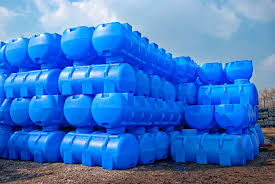Enhancing Durability: The Strengths of Rotational Molding in Product Design
Rotational molding, frequently dubbed as rotomolding, stands apart as being a unique technique within the realm of plastic producing. Here is a greater dive in the complexities of this procedure:
The Rotomolding Process:
Fabric Reloading: The procedure initiates using the packing of polymer resins, normally in powder type, in a hollow mildew.
Warming: The jam-packed mold will be warmed up in an cooker mainly because it rotates bi-axially or tri-axially. This operated warming melts the resin, allowing it to layer the interior surface of the mildew equally.
Cooling: Subsequent to the melting cycle, the fungus is cooled, through air or normal water, solidifying the resin into the wanted condition.
Unloading: When cooled, the mold is opened, as well as the finalized item is extracted, ready for concluding touches if required.
Unique Features:
Tooling Overall flexibility: Rotational molding permits the creation of complex shapes and styles without the need for complex molds, offering tremendous style overall flexibility.
Durability and strength: Items manufactured through rotational molding have consistent walls fullness, ensuring steady durability and strength.
Economic Viability: With relatively low tooling charges and the ability to make huge, hollow pieces in a single item, rotational molding demonstrates inexpensive for size creation.
Materials Range: From polyethylene to Pvc material, rotational molding accommodates various thermoplastics, catering to different merchandise demands.
Software Across Businesses:
Manufacturing: Safe-keeping tanks, containers, and boxes locate their genesis in rotational molding due to its expense-performance and sturdiness.
Buyer Merchandise: From trash can containers to furnishings, rotomolding reaches every day consumer products, capitalizing on its layout versatility.
Enviromentally friendly: Recycling receptacles, composters, and rainwater harvesting solutions exemplify the eco-friendly applications of rotational molding.
Travelling: Rotomolded components are crucial from the vehicle and underwater sectors, leading to light, deterioration-tolerant factors.
Defeating Challenges:
Cycle Time Search engine optimization: Tactics like mold preheating and multiple-arm rotational machines assist minimize the time-consuming character of your procedure.
Squander Administration: Endeavours to lower unwanted material and boost trying to recycle functionality are on-going to address enviromentally friendly concerns.
Fabric Developments: Study into new materials and preservatives strives to grow the material color scheme for rotational molding, improving merchandise efficiency and beauty.
In essence, Rotational Molding emerges as being a multifaceted production approach, offering a mix of layout flexibility, economical feasibility, and fabric adaptability, ready to leave an indelible tag across a variety of businesses.


